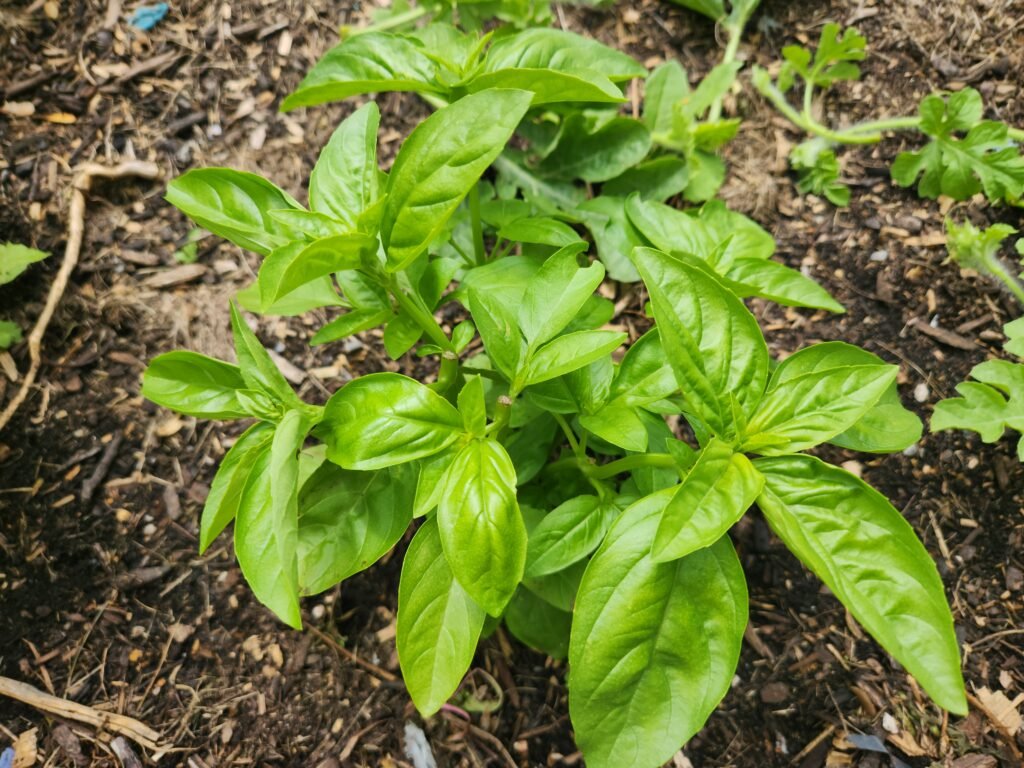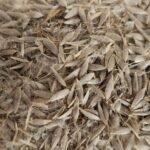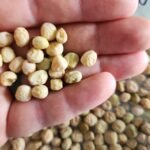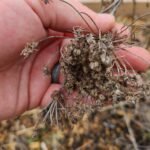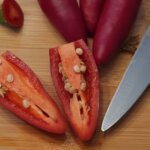Basil is one of those herbs you can never have enough of in the garden. Whether it’s tossed fresh into a salad, layered into pasta sauce, or blended into pesto, basil adds that unmistakable burst of flavor. While propagating basil from cuttings still my go to method for multiplying my basil plants, there’s another skill every gardener should learn: saving basil seeds.
This post contains affiliate links. If you use these links to buy something we may earn a commission. Thanks.
Knowing how to collect basil seeds means you’ll never have to depend on store-bought seeds again. It’s simple, cost-effective, and one of the easiest ways to keep your garden self-sufficient. Plus, there’s something rewarding about closing the loop. Growing, harvesting, and replanting your own seeds year after year.
Why Save Basil Seeds?
Basil is an annual herb, which means it completes its life cycle in a single season. Once winter hits, your basil plants die back, and you’ll need a new source of plants the following spring.

Buying seeds or starter plants every year adds up, and store-bought seed packets can lose their germination power if they sit too long on the shelf. By collecting and storing your own basil seeds, you’ll:
- Save money each growing season
- Keep a constant supply of fresh, viable seeds
- Grow basil varieties best adapted to your garden
- Take one more step toward food self-sufficiency
Is It Hard To Collect Basil Seeds?
Not at all! Collecting basil seeds is easy, though it does require patience. Basil plants need to flower first, and those flowers must dry out before you can gather seeds. Toward the end of the season, your basil will naturally send up flower stalks. Once they dry, you’ll be ready to harvest.

What Do Basil Flowers Look Like?
Basil flowers are small, delicate blooms, usually white or light purple depending on the variety. They cluster along a tall stem and mark the beginning of the seed-production phase.

Do Basil Flowers Need Pollination?
Yes, but basil makes it easy on you. Basil flowers are self-pollinating, meaning each flower has both male and female parts. A light breeze, a gentle shake, or a visiting pollinator is all it takes to ensure fertile seeds.
How To Harvest Basil Seeds
Step 1: Wait for the flowers to dry.
As the season winds down, basil flowers turn from white to brown. That’s your signal.

Step 2: Cut the stems
Use clean garden pruners to snip off the flower stalks once they’re brown and brittle.
Step 3: Bring them indoors
Place the stems somewhere dry and airy until they’re fully crisp.
Step 4: Extract the seeds

Roll the dried flowers gently between your hands over a bowl. Tiny black seeds will fall out.
For cleaner seeds, run the mix through a fine mesh strainer. The seeds will pass through while the chaff stays behind.
How Long Do Basil Seeds Last?
Basil seeds are viable for up to 5 years if kept in ideal conditions. The older your seeds are the lower the germination rate will be. It’s a best practice to label and date your seeds when you collect them.
How To Store Basil Seeds?
To store basil seeds keep them in a plastic bag or mason jar with a lid. Store them in a cool dark place and away from moisture. To be extra cautious about moisture you can add a silica gel packet with your seeds.
FAQ: Saving Basil Seeds
No, basil is self-pollinating, so one healthy plant can provide plenty of seeds.
Yes, but only if it’s grown long enough to flower. Be aware that grocery-store basil is often hybrid, so seeds may not grow true to type.
Yes, once basil flowers, the leaves can become bitter and production slows. If you want both leaves and seeds, let only a few plants flower while harvesting leaves from the rest.
You can, but germination is best after the seeds have fully dried and gone through a short storage period.
Any variety works, but if you grow multiple types close together, they may cross-pollinate. For pure seeds, separate your plants by distance or grow one variety at a time.
Conclusion:
Saving basil seeds is one of those small homesteading skills that pays off season after season. With just a few plants and a little patience, you can collect hundreds of seeds. Enough to keep your garden stocked for years.
Whether you’re striving for self-sufficiency, experimenting with different basil varieties, or simply want to save money, seed saving is worth the effort. Next time your basil plants start flowering, let nature run its course, then gather those seeds and secure your own endless harvest.
We hope you enjoyed this basil seed saving guide. If you did make sure you check out our growing guides, seed saving guides, and our recipes. We are growing our website with more articles all the time, and we invite you to grow with us. If you have any questions about saving basil seeds or would like to share some of your knowledge with us please leave a comment below. Happy gardening!

